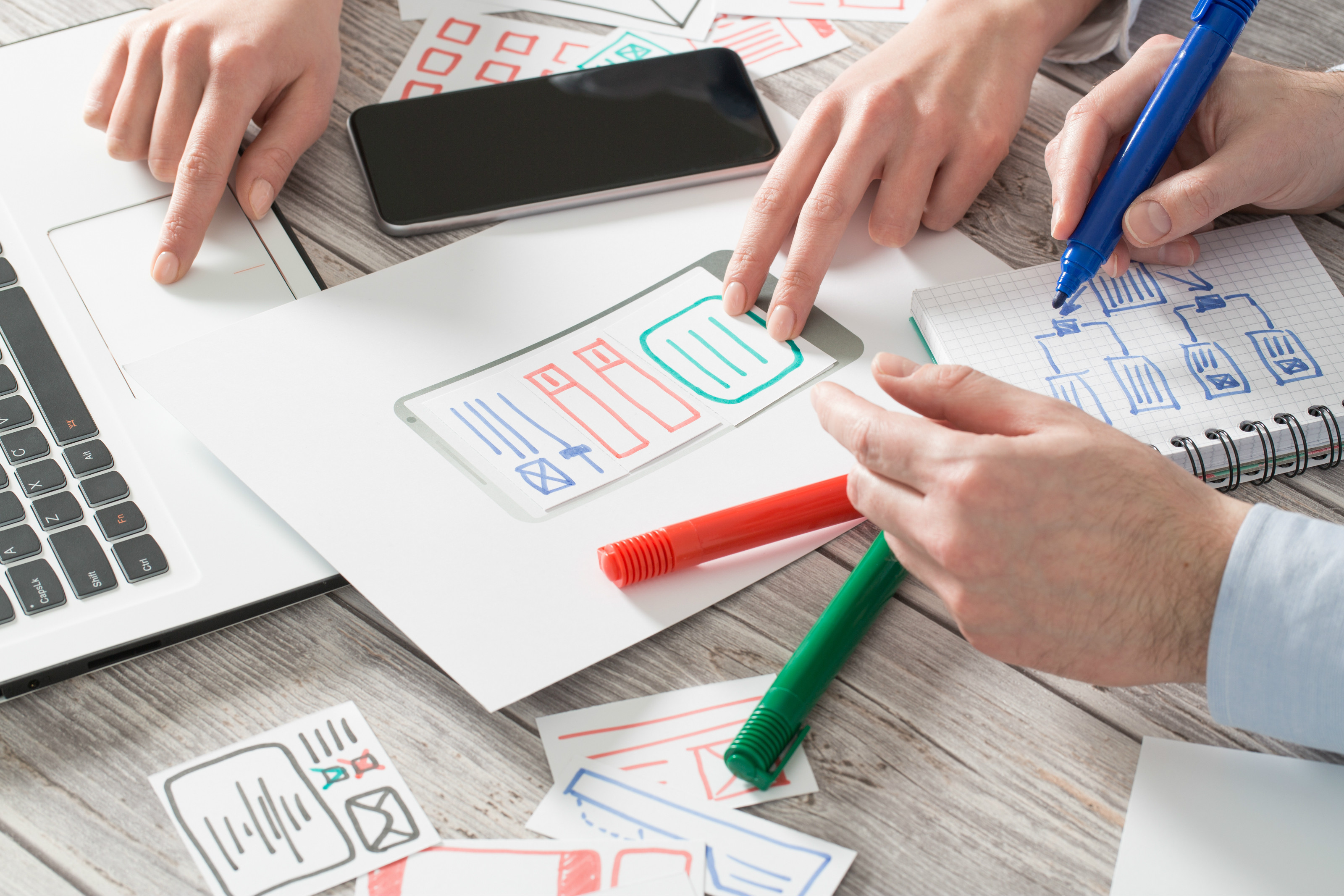AI in UX and other UX trends your company should pay attention to in 2019
AI in UX and other UX trends your company should pay attention to in 2019
New virtual products are created on a daily basis with a huge variety of purposes. Irrespectively of their purpose of use, they all need to follow the same basic rules and trends. Let us share our collection of UX and UI principles.

It has been a while since digitization, technological implications, gadgets and appliances are considered as permanent passengers supporting us even in everyday or business considerations. According to this we are constantly exposed to several digital interfaces; the virtual places of grabbing user’s attention and the sources of acquiring information in the easiest way possible. These interfaces influence our perception of a certain product, service or system and therefore has an impact on user experience. That is why your business should handle UX design as a priority and also to keep an eye on the determining trend movements.
UX lines to follow - basic user experience principles
Before listing all the latest UX directions let us see the essentials of user experience design.
As defined by the Nielsen Norman Group Conference, a purposeful UX design follows basically four directives; utility, usability, desirability and brand experience.
Utility
When referring to utility your company has to consider not only the need of the certain user that our virtual product is intended to satisfy but the product itself should serve as a solution to the user’s problem. In other words, utility is the value provided by user experience design and recognized by the user. In order to improve the utility provided by UX design, testing of users should take place.
Usability
As it was mentioned before, principle of utility is focusing on solving problems of users, but none of these could be handled without the weapon of usability. The essence of usability is about reducing the operational and cognitive costs of the users. In order to achieve the desired result, you should consider simplicity, clearity, consistency and accessibility. It means that while concentrating on using simple language and clear, flowing hierarchy of information organized throughout the design, it is also practical to consider the familiarity of design as applied by similar products and the wide, timely and customized availability of the virtual product by users. Reducing costs of the users effectively is possible only, when usability is tested both before and after the execution of design.
Desirability
Desirability is described briefly as designing with personality. This is about adding a character to design, which differentiates your business from competitors. When it is combined with usability, your UX will be memorable and recognizable by users. Desirability of user experience design can be reached for instance through improved visual grammar and narrative design.
Brand experience
In addition to the aboves, user experience is influenced also by the persuasiveness and consistency of brand image communicated through virtual product. Since brand experience is tightly connected to create aspirations for users, it is associated with the desirability of UX. Furthermore, it adds a marketing point of view to the creation of user experience rather than a designer’s one.
Future of user experience - conversion of UX and new technologies
Besides following the most significant UX guidelines, it is important to keep an eye on the most recent UX design trends with the purpose of maintaining a competitive position.
Mentioning only today’s most popular buzzwords such as artificial intelligence, chatbots and Internet of Things we can recognize that we became obsessed with these new technologies in the last years. On the other hand, these innovations are still not fully incorporated in people’s lives. Now, it is time for interpreting the widespread usability of the latest technologies also in terms of user experience in a sustainable way.
What does the conversion of new technologies mean for the future of user experience? Let us see some examples.
AI in UX
The rise of artificial intelligence offers several opportunities for easing the work of designers for instance by automating legwork. Among others, Adobe Scene Stitch can be utilized in helping designers to edit certain scenes and also, Airbnb announced a new technology for translating paper sketches into codes in an expressive way. Chatbot technology utilizes the advances of AI, too. Chatbots are means for personalizing virtual user interfaces, thus creating more relevant and desirable user experience, leading to better conversion rates.
Voice UI
Tactile interactions can be replaced by managing user interfaces through voice controlled actions. Building a virtual product based on natural language processing is more about writing, building context, and synthesizing data than the actual design. That is why it requires a special understanding of UX design emphasizing voice communication but still concentrating on the usability of the interface. Although this kind of interaction is still not common in the UX world, its popularity is increasing since it creates an opportunity to reach the audience of people with disabilities, too.
Touchless gesture interaction
Completing the line of tactile and voice interactions with motion controlled interfaces, we will arrive by touchless gesture interaction. Tracking the motion of hand and thus controlling a certain virtual product is possible using a radar for detecting, where a person’s hand is an interface and gesture is input. Applying this technology properly enhances UX and is applicable widely, mentioning only cars’ head units, wearables and Internet of Things.
Importance of powerful user experience
After going through the most important principles and trends of UX designing the following questions arise: Why is it important to pay attention to user experience and how is it able to enhance business success?
The answer lays behind the fact that the user experience is able to support our business only when they are aligned with organizational goal and objectives. In this case, companies should build up their activities taking into account UX strategy. This includes the process of setting smart goals and objectives that meet user and business requirement based on planning and research and also continuously testing, measuring and monitoring of current UX.
Measuring UX performance through KPIs helps you to enhance your company’s UX culture and therefore supports focusing on solving the right problems for target users thus improving the user experience. Such performance indicators concerning UX are task success rate, user error rate, number of clicks per purchase, time-on-task and system usability scale.
Source: UX Planet, Medium, UX Design, Interaction Design Foundation
For acquiring more and relevant users and better performance of your user interface it is essential to build a powerful UX point of view into your business strategy. This is the point where RÉGENS is able to assist your business in designing a user engagement.


